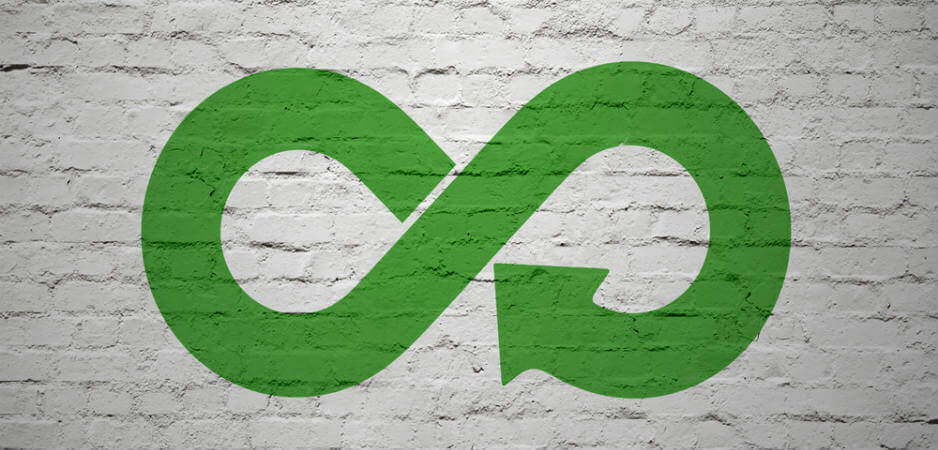A concept for a restorative, zero-waste economic model is looking increasingly attractive as natural resources become more scarce and expensive.
The consumption behavior in our society today is largely based on a linear model of “take, make, waste.” There is a problem with this system that needs to be first acknowledged and then fixed. When it comes to waste, for example, it is often disposed in landfills or incineration facilities. However, these are quick fixes, and more countries are looking for sustainable alternatives. The concept of circular economy — a restorative, zero-waste economic model in which resources are used to maximum capacity and natural systems are regenerated — has emerged as one of such initiatives.
More cities or municipalities are moving away from landfills as a waste disposal option because, first of all, landfills are not practical due to the immense space they require — something cities are increasingly running short on. Second, landfills are not environmentally safe because of the toxic chemicals such as methane seeping into the groundwater. This affects both the food and the drinking water that we consume.
Similarly, incinerators are often considered as a better solution because of their waste-to-energy application. However, they are inefficient for a number of reasons. First, they are hugely costly to build and maintain: A 2,000-ton per day incinerator can cost up to $500 million in Europe. Moreover, incinerators are not efficient or safe in generating energy from waste. Recycling materials from municipal solid waste saves three to five times more energy than burning them for electricity. To produce the same amount of electricity as a coal plant, the average incinerator in the US releases 28 times as much dioxin and 2.5 times as much carbon dioxide.
In fact, at the World Economic Forum in Davos, President Emmanuel Macron announced that France will shut down all coal-fired power stations by 2021. This shows that there is awareness of a need for change, and circular economy has paved the way and gained momentum as the next best viable solution.
Prices for natural resources are increasing, especially as our growing need for oil, minerals and gas is leading to resource scarcity. A scarcity in resources leads to price volatility, with reliance on nature starting to look ever pricier. In 2011, almost a third of profit warnings issued by FTSE 350 companies were related to rising resource prices. The UN suggests the risk of resource-related conflicts “may well come to define global peace and security in the 21st century.”
Another reason, why circular economy has gained traction is due to the promising growth numbers projected that could potentially be an immense gain if reached. Research conducted by the Ellen MacArthur Foundation, Foundation for Environmental Economics and Sustainability (SUN) and consultancy firm McKinsey have identified that transitioning to a circular economy could generate a net economic gain of €1.8 trillion ($2.2 trillion) per year by 2030 in Europe alone. This is a large sum and rather a loss for Europe if it does not take any action to achieve these potential gains. Further, McKinsey also estimates that greater resource efficiency could save European manufacturers $630 billion a year. These numbers are compelling and have gained the attention of many businesses and politicians, helping to promote the notion of the concept of circular economy.
In recent years, the notion of circular economy has been adopted and endorsed by governments both in Asia and Europe. In China, for instance, it is is being included in the 11th and 12th five-year Plans National Economic and Social Development, allowing greater support for and focus on sustainability.
An ambitious initiative by the Ellen MacArthur Foundation and WRAP, the New Plastics Economy, aims to win commitment from major brands, retailers and packaging companies to work toward using 100% reusable, recyclable or compostable packaging by 2025 or earlier. Currently, Amcor, Ecover, Evian, L’Oréal, Mars, M&S, PepsiCo, The Coca-Cola Company, Unilever, Walmart and Werner & Mertz have come onboard the initiative, which was announced at Davos on January 22. Together these 11 companies are responsible for producing some 6 million tons of plastic packaging a year worldwide.
In December 2017, the French government pledged to recycle 100% of plastics by 2025. By March, it will present a circular economy roadmap for the practical steps needed to realize those ambitions, which was also highlighted in the recent World Economic Forum.
As the world becomes more aware of climate change, toxic gases, price volatility and scarce resources, the more circular economy as a concept seems relevant. Surely, this is not a panacea for all environmental issues, but it is a step toward making a difference by being smart about finite resources by trying to close the loop and keeping the circulation of products and materials going for as long as possible. The rise of circular economy may just save us from the immense damage that is caused by plastic waste ending in landfills. While it is going to take ambitious goals and initiatives to change the status quo, this momentum gained by the concept of circular economy signals that we are heading toward a circular 2018 and beyond.
The views expressed in this article are the author’s own and do not necessarily reflect Fair Observer’s editorial policy.
Photo Credit: BsWei / Shutterstock.com
Support Fair Observer
We rely on your support for our independence, diversity and quality.
For more than 10 years, Fair Observer has been free, fair and independent. No billionaire owns us, no advertisers control us. We are a reader-supported nonprofit. Unlike many other publications, we keep our content free for readers regardless of where they live or whether they can afford to pay. We have no paywalls and no ads.
In the post-truth era of fake news, echo chambers and filter bubbles, we publish a plurality of perspectives from around the world. Anyone can publish with us, but everyone goes through a rigorous editorial process. So, you get fact-checked, well-reasoned content instead of noise.
We publish 2,500+ voices from 90+ countries. We also conduct education and training programs
on subjects ranging from digital media and journalism to writing and critical thinking. This
doesn’t come cheap. Servers, editors, trainers and web developers cost
money.
Please consider supporting us on a regular basis as a recurring donor or a
sustaining member.
Will you support FO’s journalism?
We rely on your support for our independence, diversity and quality.







